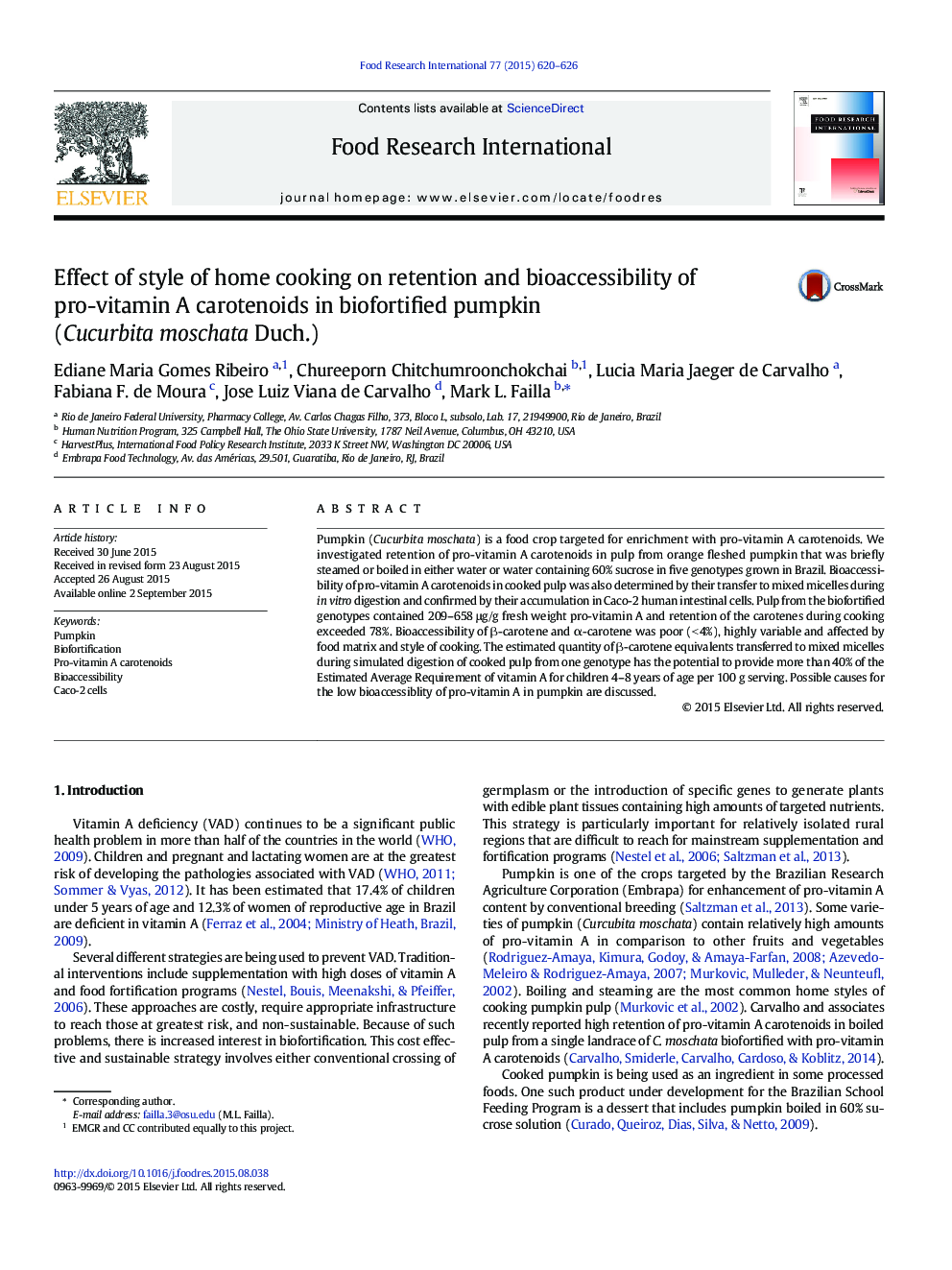| Article ID | Journal | Published Year | Pages | File Type |
|---|---|---|---|---|
| 4561384 | Food Research International | 2015 | 7 Pages |
•Several tested genotypes of C. moshata contained more than 400 mg/kg pro-vitamin A.•Pro-vitamin A retention in pulp cooked by common Brazilian home styles was 78%.•Bioaccessible βC equivalents/100 g of one cooked pulp was > 40% EAR for 4-8 y child.•Methods for more efficient release of pro-vitamin A in pumpkin merit investigation.
Pumpkin (Cucurbita moschata) is a food crop targeted for enrichment with pro-vitamin A carotenoids. We investigated retention of pro-vitamin A carotenoids in pulp from orange fleshed pumpkin that was briefly steamed or boiled in either water or water containing 60% sucrose in five genotypes grown in Brazil. Bioaccessibility of pro-vitamin A carotenoids in cooked pulp was also determined by their transfer to mixed micelles during in vitro digestion and confirmed by their accumulation in Caco-2 human intestinal cells. Pulp from the biofortified genotypes contained 209–658 μg/g fresh weight pro-vitamin A and retention of the carotenes during cooking exceeded 78%. Bioaccessibility of β-carotene and α-carotene was poor (< 4%), highly variable and affected by food matrix and style of cooking. The estimated quantity of β-carotene equivalents transferred to mixed micelles during simulated digestion of cooked pulp from one genotype has the potential to provide more than 40% of the Estimated Average Requirement of vitamin A for children 4–8 years of age per 100 g serving. Possible causes for the low bioaccessiblity of pro-vitamin A in pumpkin are discussed.
Graphical abstractFigure optionsDownload full-size imageDownload as PowerPoint slide
